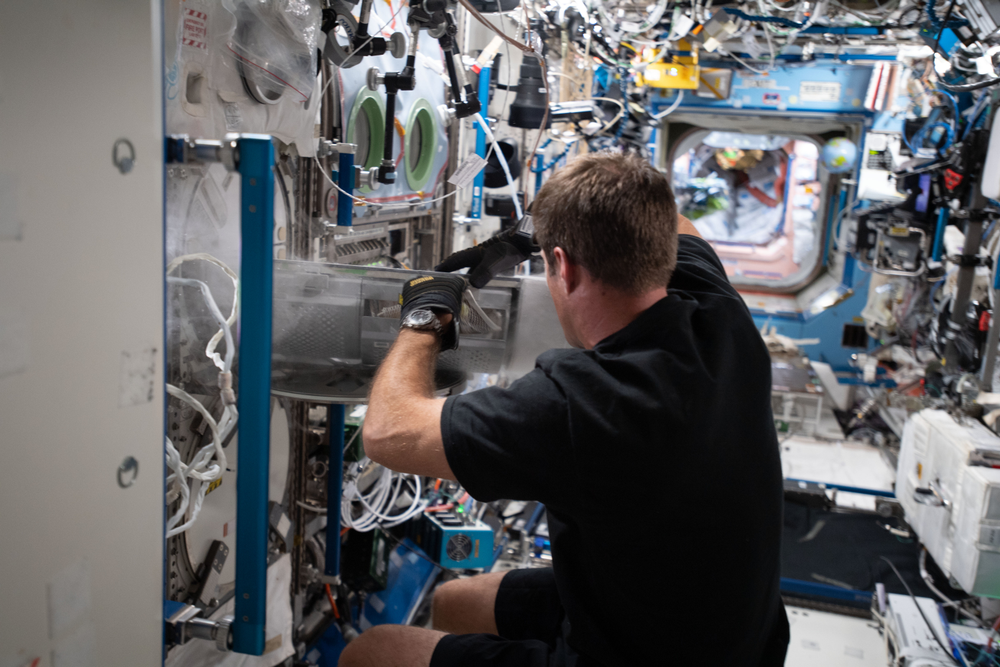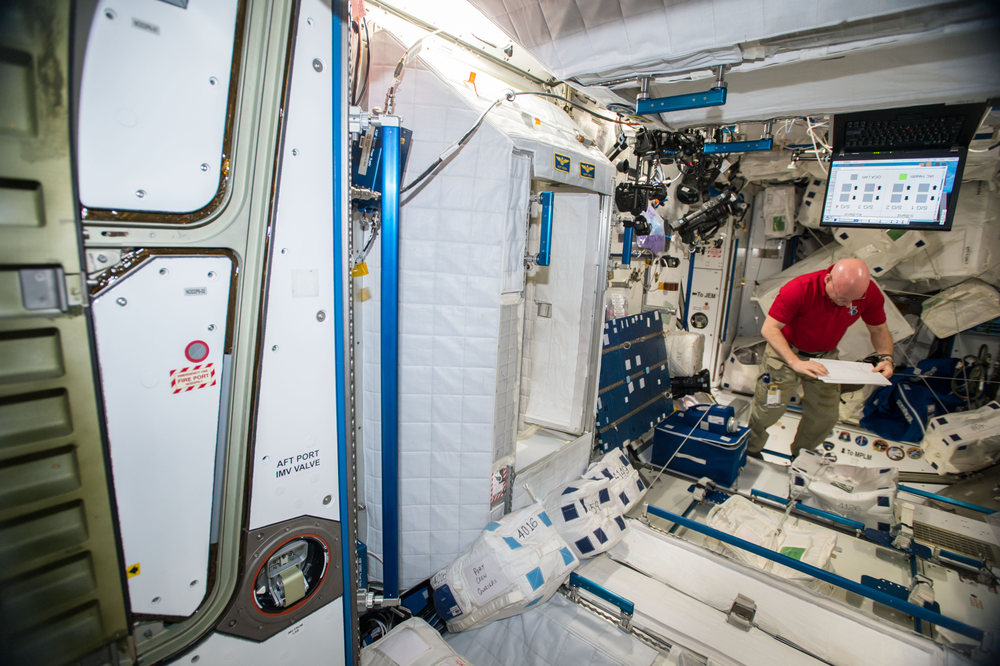Station Science Top News: June 21, 2024
A noninvasive, handheld monitoring device accurately measured muscle stiffness, which is an indication of muscle strength. Astronauts perform daily exercise to mitigate the effects of spaceflight on musculoskeletal health, but monitoring the effectiveness of these countermeasures has been limited to pre- and postflight due to the unsuitability of measuring technologies for spaceflight. Accurate inflight assessment could indicate which muscles to target, optimizing the effectiveness of astronaut exercise programs.
The ESA’s (European Space Agency) Myotones investigation collected data on muscle properties during long-term spaceflight. Measurements obtained from different parts of the body before, during, and after spaceflight suggest that current countermeasures for muscle disuse in space are effective, although less so for the lower leg muscles. This measuring device could benefit astronauts on long-duration missions and patients in environments lacking suitable means for monitoring on Earth.

***
Using a new machine learning technique, telescopes can detect and track small space debris and meteorites and this ability could be made even more accurate. The ability to identify and track meteorites and debris is an important part of efforts to reduce the increasing risk of collisions with the growing number of satellites orbiting Earth.
The MINI-EUSO telescope inside the International Space Station observes Earth in the ultraviolet range. Its objectives are the study of atmospheric phenomena and the detection of meteors and some cosmic ray showers, but it also could be used to develop systems that remove orbital debris using lasers. Researchers applied the machine learning to real and simulated data to demonstrate its ability to identify potential space debris that triggers data recording by the telescope and its capacity to decrease false positives.
***
Researchers found that strains of Enterobacter bugandensis, a common bacteria found in the human gut, can develop multi-drug resistance and that stressors present on the International Space Station could be the driving force for these adaptations. These findings shed light on microbial behavior and characteristics in extreme, isolated environments and underscore the need to mitigate the risks from potential pathogens to protect astronauts.
Microbial Observatory-1 monitored the types of microbes present on the space station for one year, returning samples to Earth for further study. Microorganisms exposed to microgravity can acquire antibiotic resistance and heightened virulence via genetic changes and exposure to space can compromise the human immune system, making astronauts more vulnerable to pathogens. Understanding the microbial community on the space station is critical to maintaining astronaut health and safety.








